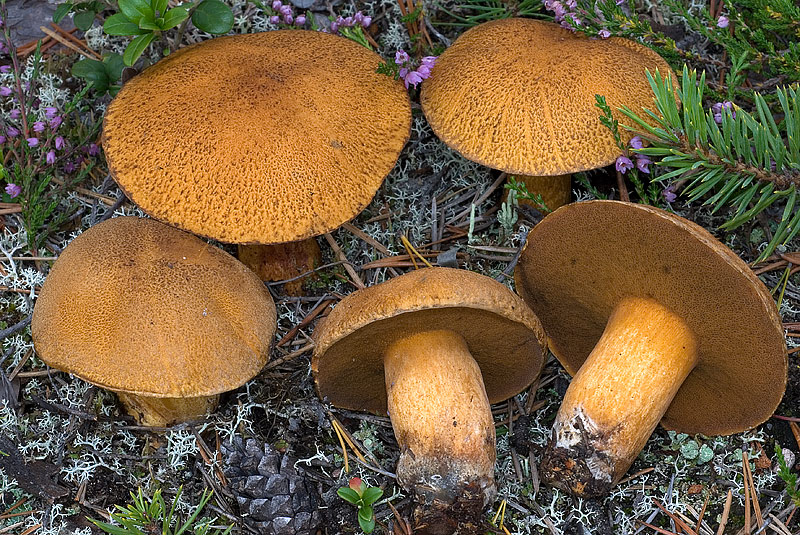Suillus variegatus
Sand Boletus ( Suillus variegatus )
The sand Boletus ( Suillus variegatus ) is a species of fungus in the family Schmierröhrlingsverwandten ( Suillaceae ). The German name derives from the sandy acting hat surface.
- 6.1 Literature
- 6.2 Notes and references
Features
Macroscopic characteristics
The hat of the Sandröhrlings has a diameter of 4-12 cm and is mainly colored yellow to olivocker. He is at first hemispherical, later convex. The surface is tomentose - matt or imply a fine-grained impression; later they verkahlt. The hat skin is greasy only with intense rain. The relatively short tubes to separate darker than the Hutoberseite and heavy with the meat. You are standing closely together and have a young dark Olivton. Later they are olivocker dyed to rostoliv. The cylindrical stem is 5-8 cm long, yellowish in color and marbled watery. The flesh is yellowish and weakly blauend, but not always. The smell is insignificant to sour.
Microscopic characteristics
The olive-brown spores have a size of 8-10 × 3-4 micrometers.
Artabgrenzung
Similarity with the cow Boletus, which is often found at the same location. However, it has a smooth and more kuhbräunlich colored hat surface. His tubes are gross and have the same color as the hat. The relatively rare cornflower Röhrling may look similar. Meanwhile hat surface is colored pale yellow and has a pretty grobfilzige surface; the tubes are very bright Furthermore, it differs from Sandröhrling by a much stronger blue that occurs after the slightest touch.
Ecology and phenology
The Sandröhrling can be found from June to November under pines with which it forms a mycorrhiza. It prefers acidic soils, but is rarely found on calcareous ground, like on a sandy substrate.
Dissemination
The fungus is widespread and fairly common throughout Central and Northern Europe.
Importance
The taste of Sandröhrlings is not very aromatic. Therefore it is mainly utilized for mixed dishes.








.jpg/220px-Suill.var(2).jpg)
